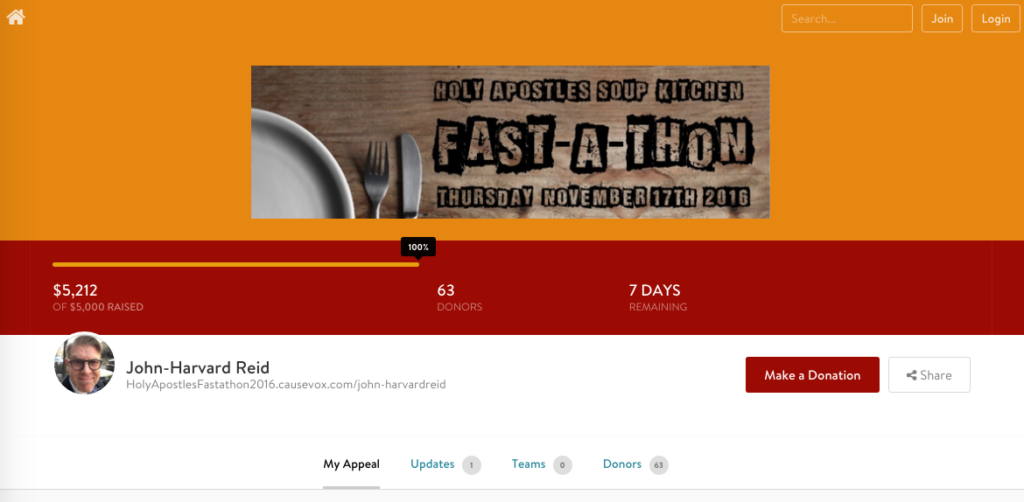On any given day, I regularly sign in to Facebook, Instagram, and LinkedIn. I follow Twitter during big events (such as the presidential election) and send the occasional Snapchat. Like most internet users, I have between 5 and 6 social media accounts, 3 of which are used often.
Nowadays, it’s safe to say that most of us access our social media accounts a lot.
We use them to connect with friends, family, coworkers, neighbors, and that guy from high school AP Bio class. Yet, in addition to those personal connections, we’re also engaging with posts, pages, pictures, tweets, pins, etc. from brands and causes we care about.
Because we use social media to connect 24/7 with people and things that matter, it’s only natural that online fundraising also would be affected.
Here at CauseVox, we’ve seen just how valuable social media is in increasing the pool of prospective donors. We view social media as an added channel that nonprofits can use to connect and rally current and potential supporters!
Using social media and online fundraising together can be a truly effective way to reach your intended audience and raise money for your cause.
Here are 3 of the ways social media has transformed online fundraising and how you can adapt your own campaigns to maximize your fundraising potential
“Here are 3 of the ways social media has transformed online fundraising and how you can adapt.” tweet this
1. It Allows For More Transparency
In the past, many nonprofits and charities built and nurtured relationships with donors through mail, over the phone, or in-person. But as more and more people, businesses, and nonprofits began creating social media accounts, the tide shifted.
Today, anyone interested can connect with your organization on social media. By following your cause, they’re immediately given access to engaging posts, emotion-inducing videos and images, and a “backstage” look at your organization’s work.
For the first time, donors don’t have to dig for information in a pamphlet or call to find out when the next campaign is. They can simply head over to your page to view content and stay connected.
Therefore, it is important that you share quality, pertinent information related to your cause on social media for your donors to see. For example, Children of Vietnam provides their audience with news updates for their organization as seen in the post below.
We believe social media provides unparalleled transparency for your nonprofit or charity. With the right information, your donors will have a better understanding of your organization, which will help to naturally boost donor retention rates down the road.
2. It Increases Your Exposure
Even though recent (and ongoing) algorithm changes from both Facebook and Instagram have put businesses and nonprofits at somewhat of a disadvantage, that still doesn’t mean that you run the risk of being hidden to your donors.
The opposite is true— you just have to work for it.
To keep growing your exposure organically, and thus, your donor audience, you must adjust your content and your online fundraising donation requests.
Try the following:
- Use peer-to-peer fundraising, which encourages your online audience to share the campaign with their networks
- Create and share donation requests that people will want to share (include quality images, captivating videos, timely statistics)
- Ask your donors to engage with your posts (“like”, Tweet, share, comment, etc.)
To maximize your reach even further, use the specific marketing features on each platform to promote or boost your campaign such as Facebook or Pinterest ads.
3. It Boosts Referrals
At CauseVox, we’ve seen firsthand just how quickly an online fundraising campaign can spread when people who care about your cause share their personal campaign page with friends and family.
Online fundraising with social media aids your organization in raising money and awareness from organic, referral-based growth. These referrals, in particular, are a bit easier to come by through social media. It’s quite easy for one of your supporters to share the campaign online, possibly resulting in a chain reaction of new people learning about your cause, donating, and then sharing the campaign with their own networks.
But in order for your campaign to be referred, it must be shared. When you use CauseVox to power your online crowdfunding or peer-to-peer fundraising campaign, we give you the tools to increase the number of referrals, including social sharing and email buttons, customizable personal fundraising pages, and space to share your nonprofit/fundraiser story.

What Does This Mean For You?
Not all online fundraising can (and should) be done through social media. But, don’t shy away from using social media to continue developing, growing, and nurturing relationships with both current and prospective donors.
We believe that the donor to nonprofit relationship isn’t simply a transactional, superficial one. Donors want to be involved with a cause that means something to them, while nonprofits need donors to help fund their worthwhile work.
Remember—because of social media, your supporters have more power and influence than ever before. And while your organization may struggle to stand out amongst the crowd of reputable nonprofits and charities, social media is allowing those closest to your cause to vouch for your work, share your story, and support your cause.
“Because of social media, your supporters have more power and influence than ever before.” tweet this
To help guide your online fundraising strategies on social media, check out The Comprehensive Guide To Social Media For Nonprofit Crowdfunding and our podcast featuring social media manager Hilary Sutton.




